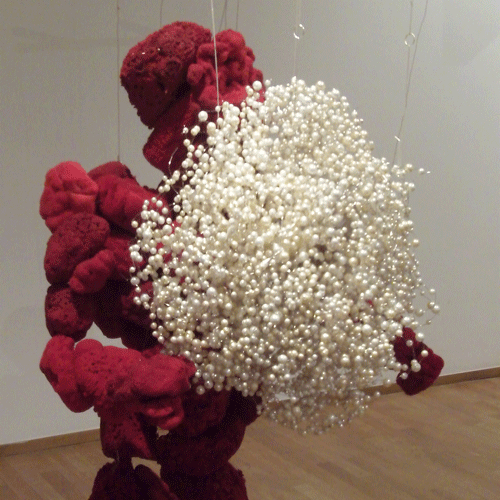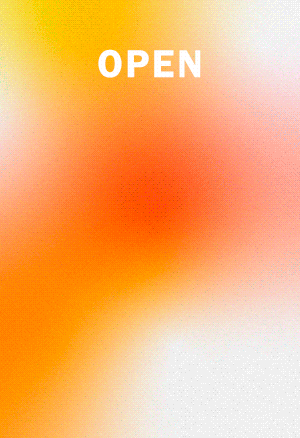Tunga
Daniel Templon, Paris
Each time one has the chance to revisit Tunga’s (Palmares, Brazil, 1952) oeuvre, one may confirm both the passion he has for his work and the magic that the discovery of this passion produces. The visual language the artist has been employing in his installations and performances since the 1970s is reaffirmed at every step. A consummate artist, he produces a body of work that makes it possible to appreciate the development of a search process well oriented towards its goals, a process that is not driven to a standstill by accomplishments or shuns from changes in language whenever they are considered necessary. Focused on his research revolving around a main theme, alchemy, his installations are not only experiences but they are also the discovery of the materials associated to the philosopher’s stone; a reflection on the human being’s physical and psychological fragility, and on its eternal inquiry into the notion of the absolute.

Tunga’s work constantly creates symbiotic relationships between physical elements with the aim of building metaphorical bridges towards the territory of the immaterial. Juxtaposition, playing with proportions and the apparent chaos of the great number of elements he uses in his compositions orchestrate a clear and well-defined dialectics. The past and the present come into conflict. Life, death, the oneiric, sexuality, desire, and alchemy, recurring themes in Tunga’s oeuvre, dominate "Présolaires", the fifth exhibition presented by the artist at Templon Gallery.
A series of containers housing new treasures such as resin, silicon or steel, marionettes made of the artist’s characteristic materials − iron, rock crystal, pearls, stills, red sponges − and a large iron gate sublimate man’s immediate contemplation into atoms, stones and crystals, sensual and erotic, that incite caressing…the viewer is confronted with a series of “mutually contagious” installations. Tunga explores nature, crystals, bodies, through a figurative abstraction in which desire and language intertwine. Austerity and sensuality, the origins and ends, mutually oppose one another in the baroque magnificence of the pieces and create a mise-en scene dedicated to nostalgia, lying somewhere between order and chaos.
However, it is the video that offers the keys to understand the play on associations proposed by Tunga. The narrative is structured around a fourteen-minute film, Cooking (2010), whose succession of scenes may shock the chaste eyes of some visitors due to their pornographic and scatological crudeness…a phallus takes on the shape of a crystal stone to penetrate a woman, then it magically becomes a piece of ice that the woman dissolves in her mouth. The woman urinates in a small bottle; both the man and the woman drink the urine…the man is matter; he eats matter and creates matter in a natural cycle. Sexuality, penetration, eroticism and archaic desires fuse. “We must not be ashamed of what we are, of matter, of what we produce, of the wastes and of what we love: sexuality.”
Without eliminating or replacing the physical qualities of the object, the artist manages to introduce a new context and change the meaning of the object. Tunga becomes a communicator, and he presents a visual proposal endowed with multiple meanings. His sculptures allow infinite interpretations, they are works in which the spectator participates in a sensory and emotional way. He works as the guide of a fantastic expedition, presenting his large-scale sculptures to the viewer as if they were tours of a subtle and intimate zone that strongly incite contemplation and lead him/her to an intense reflection on the notion of rites.
Undoubtedly, the works invite us to meditate on the genesis/disappearance/regeneration cycle. Vibrant and at the same time balanced, they condense in a few volumes the mystery of creation. They are the symbol of the return to the origins. Disturbing and suggestive, they offer a personal look. They pose an invitation to imagine possible worlds, particular stories and situations; they suggest; they incite the viewer to allow the most intimate perceptions to take control, without limits.
-
 Sponge doll with pearls, 2010-2011. Steel, dyed natural sponges, pearls, iron, 118 x 29,5 x 51 in. Courtesy Daniel Avena. Muñeco de esponjas con perlas, 2010-2011. Acero, esponjas naturales teñidas, perlas hierro, 300 x 75 x 130 cm. Cortesía Daniel Avena.
Sponge doll with pearls, 2010-2011. Steel, dyed natural sponges, pearls, iron, 118 x 29,5 x 51 in. Courtesy Daniel Avena. Muñeco de esponjas con perlas, 2010-2011. Acero, esponjas naturales teñidas, perlas hierro, 300 x 75 x 130 cm. Cortesía Daniel Avena.




